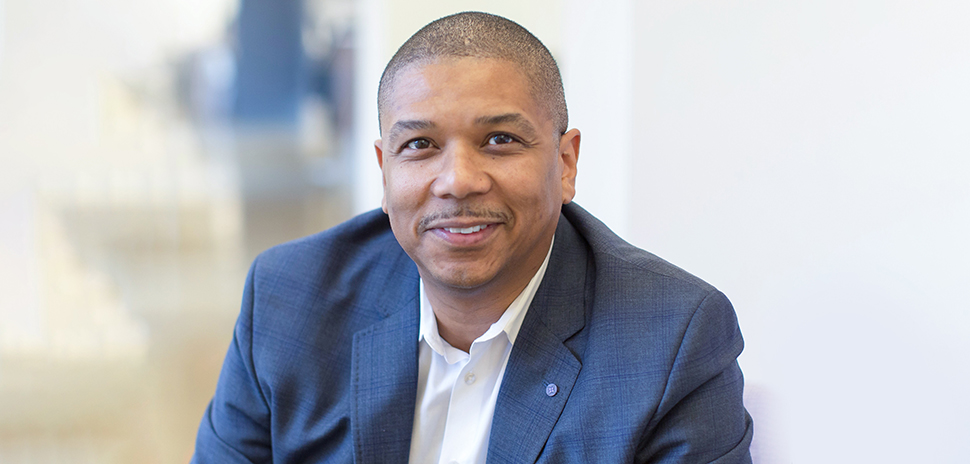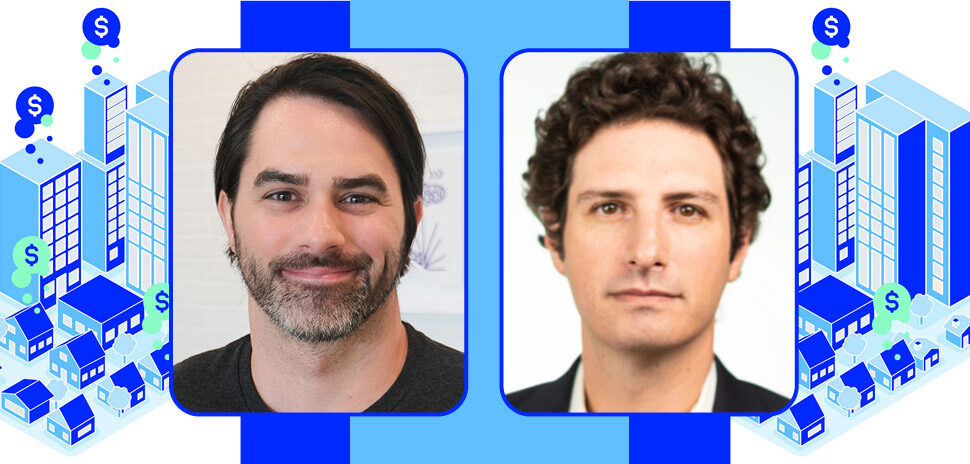When a crisis hits, the ability to change a design to fit the “new normal” is critical. In 2020, design-build firms have had to tweak plans to include features like better ventilation, more safety features, and spaces that allow for social distancing.
Darren James says that pivoting quickly is more important than ever—and having architects, engineers, and builders all in one firm makes adjusting plans a speedy process. And, even more important, the president of KAI Enterprises believes that adapting to include input from surrounding communities makes development better for everyone.
James is among the experts in our commercial real estate feature, “21 On 2021.” He shares his outlook on what’s next in a Q&A.
What challenges and opportunities are you seeing in the architecture, engineering, and construction (AEC) industry for 2021?
One of the challenges I see is the hybrid workforce. Architects and engineers are collaborative by nature, as well as education, training, and practice. With some people working from home and others in the office, there’s an equilibrium that’s still to be determined. Virtual work interfaces close some of that gap, but communication is the core of collaboration—and body language is a huge part of that collaborative communication. All design firms are working through to find our new-now and new-immediate future.
Combination/hybrid working environments will only accelerate. Office environments will continue to adapt to address social distancing and this remote interface. Another challenge is the uncertainty our clients are facing and the impact that’s having on the decision-making process regarding project starts, stops, or holds.
As for opportunities: I believe the research going on now in response to the pandemic will lead to more efficient and effective practices across the architecture, engineering, and construction arenas.
How has the pandemic affected AEC?
The pandemic has required practice adjustments from virtual meetings to hybrid work environments and little to no work-related travel, among many other small things that make up a workday. The adoption of PPE now includes face coverings and the gentle and not-so-gentle reminders to wear your face covering while on the job site or in close proximity to others. Some of the things that make team camaraderie and human interaction work are being rewoven because of the nature and responses to the COVID.
The other immediate impact is the loss of so many restaurants and small businesses. This need reduction will negatively impact design pipelines, which in turn affects construction opportunities. Designers and contractors solely focused on retail and food service verticals will have an adjustment period.
What changes in design/build have you observed with the pandemic? What changes may stick?
Modular, panelized construction and remote fabrication are being adopted by owners and clients at a faster pace.
What do you consider the most important trends in AEC right now?
There’s an increased emphasis on research, focusing on changing the physical environments in response to the new distancing recommendations and requirements. Design in response to COVID has been garnering a lot more attention. One of our local clients asked us early on to provide a comprehensive list of architectural and HVAC recommendations, as well as associated costs. KAI is a multi-disciplinary firm with architects and engineers, and we turned the list around in 24 hours. Out of those recommendations, our client adopted many and we implemented these changes during construction. This was a client reacting to the external influencers and one who was adept at making the changes during the construction process. We have since presented further research to other clients, both proactively and at their requests, and have experienced adjustments in documents and current facilities.
How will new technology change CRE and AEC over the next five to ten years?
KAI was an early adopter of BIM technology and use of drones in our construction sites. We have since pivoted to utilization of software and hardware platforms such as tablets and VR technology to communicate with out consultants, contractors and clients.
Are there planned North Texas AEC projects you think are especially notable?
The renewed investment and interest in green space and open public space; Harold Simmons Park, West End Square, Harwood Park, Klyde Warren Park extension, Southern Gateway, and the new Fair Park Community Park. This investment in these community assets goes a long way toward increasing the quality of life in Dallas. If we’ve learned anything during this global pandemic, economic meltdown, and heightened awareness of societal inequities, it is that open green space creates a sense of place and provides for healthy outcomes that enhance social equity. Healthy living and programming inherent in these environments close so many existing gaps and with people and families quarantined the ability to have an expanse of space available for recreation and rest away from a closed home brightens so many days. The data shows that park usage went up during this period and these new parks will only provide more beneficial space for the citizens of Dallas and the Metroplex.
What role can real estate developers and investors play in community transformation?
I recently read an article with a quote from Robert A.M. Stern. Essentially, he mentioned the lack of aesthetic differentiation between office towers and residential towers.
I would echo those sentiments and ask that developers look to create products that are reflective of the intended use. Ask your design teams to consider the end-user and invest slightly more to balance first-costs and community enhancements. Not all developers are driven by bottom-line profits, but we cannot afford to ignore that financing is a major driver in most development decisions.
I would ask developers to step back and take a holistic approach to how their project weaves into the fabric of the surrounding community. Legacy residents for the most part embrace positive change, as long as they are part of the solution and not an afterthought that has to live with consequences that do not consider the impact on their present and future ability to stay in the communities they have invested in for generations. Depending on where your respective projects are being developed and constructed, reach out and ask probing questions; with the realization that those questions may cause you to rethink your original premise but it will lead to a project that enhances the lives of you future neighbors. The reality is and everyone acknowledges that not all input can or will be acted upon, but it’s critical that the communities’ voice is heard.
What is the outlook for CRE projects that could have community impact in North Texas?
The awareness that has been borne of the social unrest caused by the death of George Floyd and systemic inequities has created a new approach to the community in general and under-resourced communities unlike previous periods of history. I have said it before, this summer of protest has been different. I’ve seen how the conversations around these issues have gone beyond corporate speak and marketing campaigns to substantive changes in fundamental work approaches and engagement with neighboring citizens.
What projects in North Texas do you think are most significant in terms of transformation?
I am intimately involved in both Fair Park and Harold Simmons Parks, so my lens is focused there because of the ability for these two parks to substantially improve and transform the communities immediately adjacent to each. Fair Park’s new Community Park, which will be 12-14 acres of programmed green space inside the 277-acre Fair Park, will change the way Fair Park is viewed and impact the residents in educational, operational, and business ways unlike any time in the history of Fair Park and the City of Dallas. Harold Simmons Park has the potential to re-connect two parts of the city that have been severed by the Trinity River on social and economic fault lines.
Both of these community-focused open parks have exhibited an enhanced community engagement process that opened doors for previously disenfranchised voices. The benefit is that now these engaged voices are taking that to other projects across the city.
The flip side of this is that the developers and designers involved in those projects are now taking those practices across the city. I believe that adoption of truthful and meaningful community engagement will live beyond the current climate and go a long way towards a more equitable DFW and nation.
Developers are the leading part of the equation and can influence how their projects transform communities for the better.
The interview has been edited for brevity and clarity. A version of this story first published in the Fall 2020 edition of the Dallas-Fort Worth Real Estate Review.
Sandra Engelland contributed to this report.
Read the digital edition of Dallas Innovates’ sister publication, the Real Estate Review, on Issuu.
Sign up for the digital alert here.
![]()
Get on the list.
Dallas Innovates, every day.
Sign up to keep your eye on what’s new and next in Dallas-Fort Worth, every day.

































































